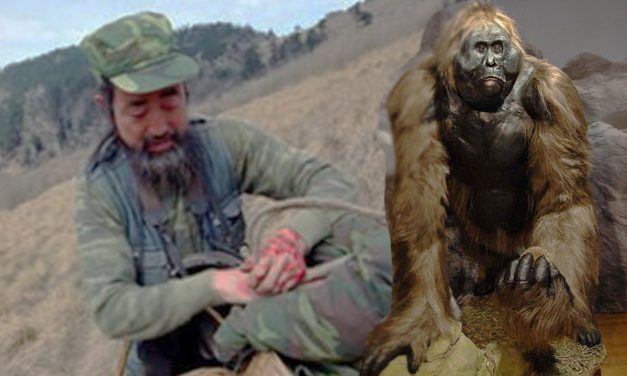62-year-old Zhang Jianxing has been scouring the ancient forests of the Shennongjia National Nature Reserve for over two decades, in search of the mythical Yeren, or Chinese yeti, and says he will not give up until he comes face to face with the creature.
Zhang began living as a hermit in the 3,200-square-kilometer mountain range in 1994, after becoming fascinated with the Yeren, a 6-foot-tall humanoid creature covered in thick red-brown fur. References of the so-called Chinese Wild Man date back to the Zhou Dynasty (1046-256 BC) in the works of classical poet and statesman Qu Yuan, mentions of its existence in the pristine forests of Shennongjia, China’s Hubei province, have been popping up throughout history ever since.

For 10 months out of every year, for the last 22 years, Zhang Jianxing has been living deep in the Shennongjia National Nature Reserve, hoping to stumble into the Yeren. Dressed in camouflaged military gear and armed with a DSLR camera, he constantly looks for clues of the creature’s whereabouts, living off the land and sleeping in abandoned homes and empty caves. To him, the Yeren is more than just an old myth, it’s a branch of science, one that he has been studying for a very long time.
Jianxing claims he has collected ample evidence of the Wild man’s existence – over 100 hair samples and 3,000 photos of large footprints – adding that he even came close to seeing it for himself no less than 19 times. And he is not alone in his beliefs. The Wild Man Research Association – yes, there is such a thing – records show reports of Yeren encounters from over 400 locals.
But with no concrete evidence to verify the existence of the Wild Man, most scientists regard it as nothing more than a legend. “There is no Wild Man in this world,” Zhou Guoxing, a former director of the Beijing Museum of Natural History and a paleontologist, told the Telegraph, in 2012. I’ve visited every place where the Wild Man was reported in China. I’ve studied everything related to the Wild Man including hair, skulls and specimens. All of them are dyed human hair or come from monkeys and bears.”
Guoxing also added that the local government in Hubei is relying on the Yeren to boost its tourism revenues. In 2012, the Shennongjia Nature Reserve signed an agreement with Beijing to promote holidays for yeti hunters.
But the stubborn Zhang Jianxing is convinced that he will one day prove the scientists wrong and bring forth irrefutable evidence of the Yeren’s existence. To him it’s just a matter of time.
Sources: Sina Weibo, China Daily












